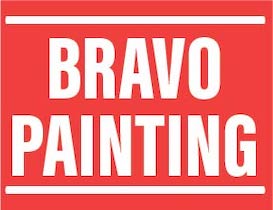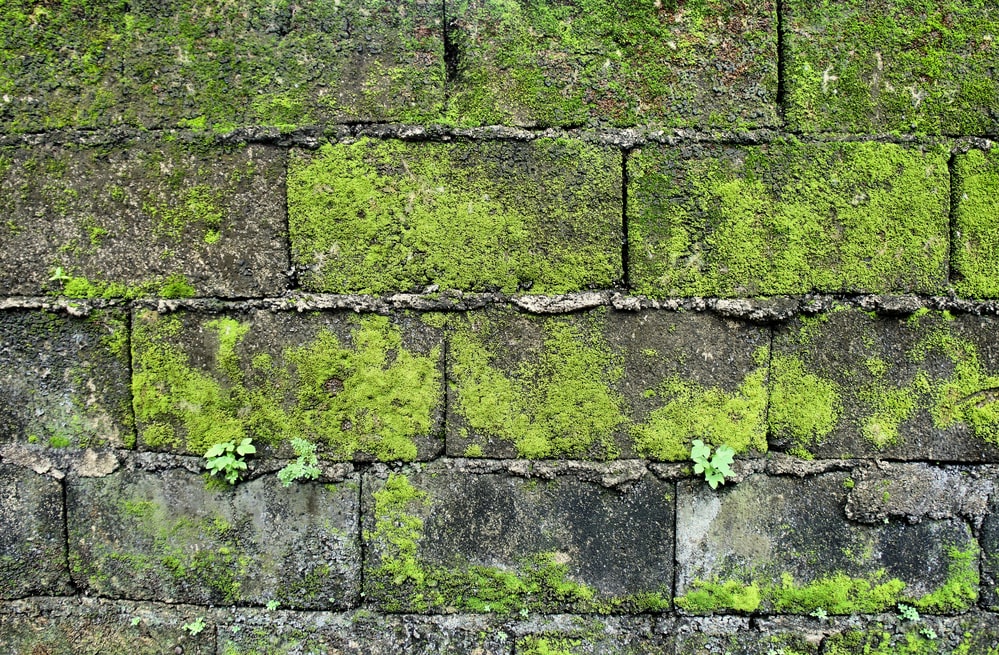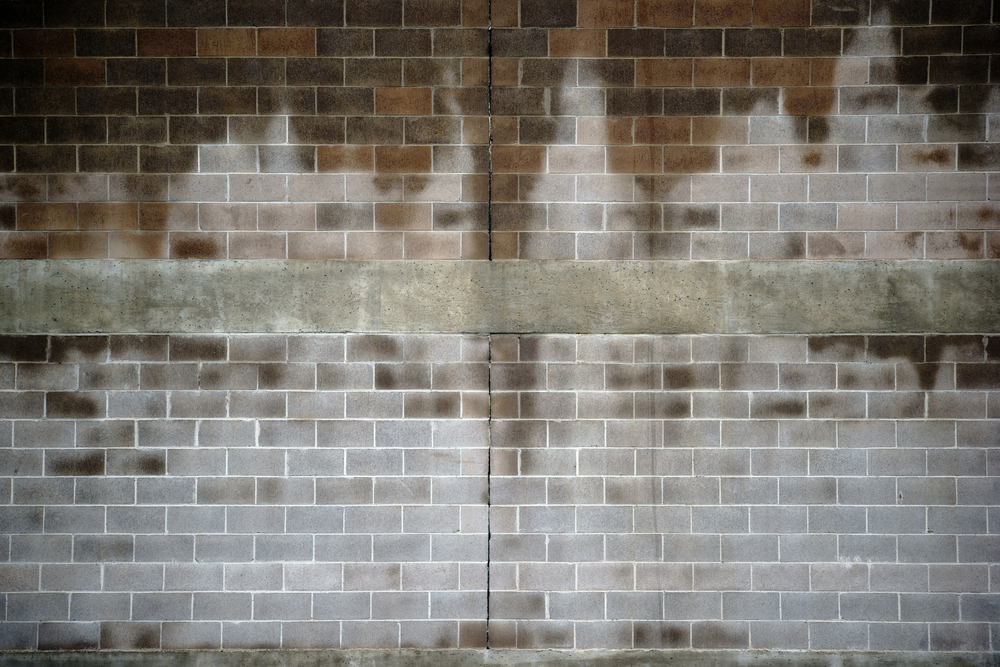Painted brick is increasingly popular as homeowners are looking for ways to update traditional brick homes.
But what are the maintenance requirements of this upgrade?
In order to keep your painted brick exteriors fresh, aesthetically pleasing, and clean, there are several steps.
But don’t worry – if painted correctly the first time, maintenance is not too difficult.
Keep reading for everything you need to know!
Why is Maintenance Important?
Maintaining your painted brick walls is important to increase and sustain your home value, save money, and keep your home resilient.
If you are not taking care of your home, it will start degrading and look rundown.
This lowers home value.
If you do not maintain your home, you will eventually have to fix certain run-down areas that may be dangerous for your home’s structural integrity, which will cost much more than consistent maintenance.
Clean, Clean, Clean
Yes, cleaning the walls is always very important for both preparing a brick wall to be painted, as well as to maintain an already-painted wall.
Cleaning both indoor and exterior painted brick walls is important, though these exterior walls require a bit more maintenance since they are braving the outdoors and harsh weather.
This is especially true in Georgia, which has many types of tropical storms, hurricanes, tornadoes, and snow storms.
First of all, the wall must be regularly cleaned and inspected for any dirt, dust, and particles, as well as any possible chipping.
Keep in mind the lighter the color of the brick wall, the more maintenance and cleaning are required.
For best results, clean your brick wall monthly.
Yes, light-colored painted brick may be a lot to maintain, but in the end, it gives your home a little pop.
The light colors allow you to add other patterns and designs in the future.
Lighter colors tend to make walls look bigger than they are as well.
Your plants and exterior decorations will definitely be shown off in what light-colored paint, especially white or cream, gives a timeless and illuminated feel.
How Do You Clean Painted Brick?
First, think of the tools and equipment needed. You do not want to clean the bricks too harshly in order to avoid damaging the bricks and paint.
Consider using a dusting product, such as a light feather brusher.
Make sure there are no chemicals in the brush because they can damage the paint.
You can use a myriad of cleaning mixtures.
Some of the most cost-effective and gentle mixtures include a mild detergent with warm water.
Do NOT use harsh chemical mixtures (bleach, ammonia, and so on), and do NOT use a power washer.
Using these chemicals damages and fades the paint.
The power washer can also damage, chip, and/or remove paint.
You will need a few buckets to put the cleaning product in, as well as warm water in a separate bucket.
A few sponges and cloth towels are necessary too.
If you have any other questions, you can contact Bravo Painters for a more in-depth explanation.
Preparation
Before beginning the cleaning process, we recommend you put down barriers on top of the floor in case the cleaner drips down the wall.
Therefore, it does not damage or moisten the floor, which can grow mold.
You could use old newspapers or plastic as protection, for example.
When you begin cleaning the painted brick, use a soft, thick cloth, or a soft sponge dipped in the cleaning mixture.
Clean in a circular motion, starting from the bottom of the wall and working your way to the top.
After using the soapy concoction, use a damp cloth to wash off the excess soap.
Lastly, use a separate towel to dry off the water.
Therefore, there will be no streaking and dripping showing on the wall.
Again, remember circular motion.
Once you have cleaned approximately half the wall, replace the sponge with a new fresh one to avoid smearing dust and dirt throughout the wall.
How Often Should You Touch Up Your Brick Wall?
It is recommended to repaint your brick wall every three to four years.
Though, it depends on where you live as well as the type of paint that was used.
If done correctly and with excellent quality paint, the paint on brick walls could last up to 15 to 20 years!
This is why working with painting professionals like Bravo Painting Company is an excellent way to ensure you use the proper high-quality paint to keep your painted brick walls fresh for as long as possible!
With a consultation, Bravo Painting Company can help you decide the best paint for your home, depending on your location and type of bricks.
For example, if the walls you are painting are directly hit by sunlight, they will fade quicker compared to a home that is protected from the sun with shade from trees and other buildings.
Though in a cold climate, you will not need to repaint the walls as much, the stormy weather may reduce the glean and brightness of the paint.
The weather can also cause damage to your home.
Yes, it is something we cannot do anything about; we cannot control the weather.
This is why we at Bravo Painting are here to help with maintenance recommendations and any touch-up painting and sealant required to maintain the beautiful integrity of your painted brick walls!
What to Look Out For
Moisture poses the most danger of destruction to your beautifully painted exterior brick walls.
When deciding whether, when, and how to clean your wall, there are a few things to look out for.
Watch Out for the Weather
The weather has a major effect on the maintenance necessary for your wall.
For example, as mentioned previously: hot summers can cause the paint to fade, while cold weather that is followed by various storms can cause moisture to seep into the bricks.
Ew, Mold!
Mold grows as hyphae, also known as multicellular filaments.
These microscopic fungi are common in areas of the home that are blocked from sunlight.
Mold can come about even more often if the painted brick walls are near trees and other vegetation that may become damp due to weather patterns or the morning air and evening air.
You can identify mold by its colors. Mold is usually green or black and can be fuzzy as well.
Mold is a type of fungi that gives off a musty odor.
Mold can cause severe health issues depending on the type of mold and the extent of exposure to the mold.
Moss
Moss also grows from the same causes as mold, which is a lack of sunlight and damp vegetation.
So, what exactly is moss, and how can it be identified?
Moss is somewhat soft and almost fluffy, comes in various colors of green, and is an actual non-vascular plant with no roots.
You may wonder, if there are no roots, how does moss grow?
Moss grows through photosynthetic tissues and the making of spores that lead to fragmentation that extends and grows.
Moss can be detrimental to your painted brick wall, for it traps moisture that leaves the walls damp, which leads to further issues for your walls.
This moisture can compromise the structural integrity of the brick, as well as damage the paint as well.
Yuck, Mildew!
And the same abovementioned goes for mildew as well.
Lack of sunlight and damp vegetation can cause mildew.
You can differentiate mildew from mold and moss because it tends to be either brown, gray, yellow, or white in a spotty and powdery design.
Mildew usually has a bad-smelling odor as well. Similar to mold, mildew is also a type of fungi.
So you may be wondering what the difference is between mold and mildew.
Basically, mildew is a type of mold or fungi.
The main difference that makes mildew stand out from other types of mold is the flatness of the mildew versus mold, which tends to be fuzzy. Black mold is flat, similar to mildew.
However, mold is much more dangerous than mildew, especially black mold.
Prevent Moisture
When we talk about damp walls, we will focus on rising dampness.
So what does increasing dampness entail?
Rising dampness can be caused by minor flooding or is caused when groundwater rises, which can leave traces of a tide line.
Though the moisture will evaporate, it will still leave you something to remember it.
Salt crystals will stay behind that can damage your brick wall in the long term by breaking down both bricks and mortar.
Salt crystals coloring is typically brown, gray, or white.
Splash Back
Splashback is when continuous rain lands on the brick walls and soaks into the mortar.
This can lead to cracks in the bricks and mortar, which compromises the structural integrity of the painted brick walls.
In this case, the best you can do is look out for damages during rainy and storming seasons and be prepared to hire a professional to repair the walls.
After, you can contact your local Georgian painters, such as Bravo Painters, to touch up the damaged paint on your wall.
How to Remove the 3 M’s (Mold, Moss, and Mildew)
First of all, do NOT use a metal brush because it can leave marks of steel that can discolor, as well as stick to the bricks, which will cause rust to form on the exterior brick walls due to wear and weather.
Therefore, distorting the paint correlation.
Instead, use a more gentle natural or synthetic brush.
Dip the brushes in warm soapy water and get to work by gently scrubbing the walls so the paint is not damaged or scraped off the bricks.
What Is Repointing, and Do I Need to Do It?
Repointing is basically fixing the structure by taking out the damaged mortar in order to add fresh and durable mortar.
This can be done by contacting a local Georgian brick masonry professional.
After painting over the newly replaced mortar is necessary to keep your painted brick walls looking fresh, appealing, and in all the same shades.
Maintaining Historic Brick
The average brick’s lifespan is approximately 500 years.
Nevertheless, brick before the 1940s was built differently than brick today.
Older brick was made by hand and of different materials, so the bricks, as well as the mortar, were softer.
Therefore, painting older bricks may not be the best idea.
The softer the brick, the easier it is for moisture to get trapped inside.
Therefore, if the brick is painted and primed, moisture is more likely to get trapped inside the brick’s pores, which can lead to efflorescence and spalling.
Efflorescence & Spalling
Efflorescence is grayish-white powdery salt deposits leftover from water that has evaporated.
Efflorescence can be difficult to remove and must be done with care in order not to damage the brick.
You can spray white vinegar on the bricks to clean gently with a stiff or bristle brush.
If you have excess bricks lying around, you can also test how your bricks could be impacted by moisture and efflorescence.
Soak a brick in water for seven days before allowing it to dry completely.
If you notice a white powdery material, then you know your bricks are more susceptible to efflorescence.
This strategy can be an excellent way to decide whether or not to paint your brick walls as well.
If not taken care of properly, efflorescence will lead to spalling. Spalling causes the exterior of the brick to start deteriorating into powder, which is why older, softer bricks are more susceptible.
Be on the lookout for signs of efflorescence, especially in the winter months and humid months, where moisture is circulating in the air.
Why are Historic Bricks Softer?
It is simply because there were not enough hot kilns and furnaces to bake the bricks as there came to be in the post-1940s.
Once the furnaces were designed for baking the bricks at a higher temperature, the bricks became harder, stronger, and more resilient.
Trust the Pros: Bravo Painting Company
Bravo, you finished reading this article! And you can always contact your local painters, Bravo Painting Company, to seal, paint, or repair your painted brick exteriors to they look great and last.
Contact us today!
Conclusion:
Maintaining painted brick exteriors is crucial to preserve their appearance, increasing home value, and ensuring long-term durability.
Regular cleaning, proper preparation, and periodic touch-ups are essential for keeping painted brick walls fresh and aesthetically pleasing.
Maintenance helps prevent degradation, saves money on costly repairs, and safeguards the home’s structural integrity.
FAQ:
Q: Why is maintenance essential for painted brick walls?
Maintaining painted brick walls is necessary to increase and sustain home value, save money, and ensure the home’s longevity. Neglecting maintenance can lead to degradation, a rundown appearance, and costly repairs that may compromise the structural integrity of the walls.
Q: How should I clean painted brick walls?
Regular cleaning is necessary to prepare a brick wall to be painted and maintain an already-painted one. For cleaning, use gentle tools and mild cleaning mixtures. Avoid harsh chemicals and power washers, which can damage and fade the paint. Cleaning should be done circularly, starting from the bottom and working upward, then rinsing and drying the wall.
Q: How often should I touch up my painted brick wall?
Repainting the brick wall is recommended every three to four years, depending on the location and type of paint used. High-quality paint, applied correctly, can last up to 15 to 20 years. Factors such as sunlight exposure and weather conditions may affect the lifespan of the color.
Q: What should I look out for in terms of maintenance and potential issues?
Moisture is a primary concern for painted brick walls. Pay attention to weather conditions, as hot summers can cause fading, while cold weather and storms can lead to moisture seeping into the bricks. Look out for mold, moss, mildew, efflorescence, and spalling, which can occur due to lack of sunlight, damp vegetation, or rising dampness. Splash back from continuous rain can also cause cracks in the bricks and mortar.
Q: How can I remove mold, moss, and mildew from painted brick walls?
It is advisable to refrain from using metal brushes since they can potentially harm the paint. Instead, gently scrub the walls with natural or synthetic brushes with warm soapy water. Harsh chemical cleaners should be avoided.
Q: What is repointing, and when is it necessary?
Repointing involves removing damaged mortar and replacing it with fresh and durable mortar. It may be required when the mortar shows signs of deterioration or damage. Consulting a local brick masonry professional is recommended for repointing projects.
Q: Are there any specific considerations for maintaining historic brick?
Historic brick, especially pre-1940s, may require special attention due to softer bricks and different construction methods. Painting older bricks is generally not recommended, as softer bricks are more prone to moisture retention. Efflorescence, the formation of salt deposits, and spalling can occur in historic bricks. Testing bricks for susceptibility to efflorescence can be done by soaking and drying them.
Q: How can I ensure proper maintenance and repairs for painted brick walls?
Consulting a professional painting company experienced in working with painted brick exteriors, such as Bravo Painting Company, can ensure proper maintenance, including sealing, painting, and repair. Professional guidance can help choose high-quality paint and implement the best practices to keep painted brick walls looking fresh and appealing for years to come.




